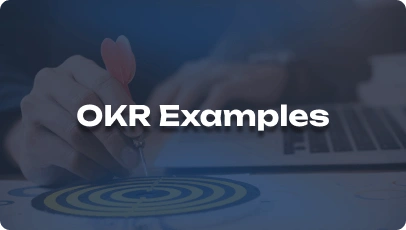In the Data Analysis/Business industry, Metrics Reporting Analysts play a crucial role in helping organizations make data-driven decisions. By mastering metrics reporting, professionals can provide valuable insights that drive business growth, optimize performance, and enhance decision-making processes. In today’s fast-paced business environment, staying ahead of trends and challenges in metrics reporting is essential for success.
1. What are the key metrics that a Metrics Reporting Analyst should focus on in the Data Analysis/Business industry?
A Metrics Reporting Analyst should focus on metrics like conversion rates, customer acquisition cost, retention rates, and ROI.
2. How do you ensure the accuracy and reliability of the data used for metrics reporting?
Accuracy and reliability are ensured through data validation processes, regular audits, and using reliable data sources.
3. Can you explain the importance of data visualization in metrics reporting and provide examples of effective visualization techniques?
Data visualization helps in presenting complex data in a digestible format. Examples include dashboards, heatmaps, and trend graphs.
4. How do you handle data discrepancies or anomalies when analyzing metrics?
Data discrepancies are investigated by identifying the source, assessing impact, and rectifying errors to ensure data integrity.
5. What tools or software do you use for metrics reporting and why?
Tools like Tableau, Power BI, and Google Analytics are commonly used for their visualization capabilities and data integration features.
6. How do you stay updated on industry trends and best practices in metrics reporting?
I stay updated through industry publications, webinars, and attending conferences to learn about emerging trends and practices.
7. Can you explain the process of setting up KPIs (Key Performance Indicators) for a metrics reporting project?
Setting up KPIs involves identifying business objectives, selecting relevant metrics, defining targets, and establishing a monitoring process.
8. How do you ensure that metrics reporting aligns with the overall business goals and strategy?
Alignment is ensured by regularly reviewing metrics against strategic objectives, making adjustments as needed, and communicating insights to stakeholders.
9. What challenges do Metrics Reporting Analysts commonly face in the Data Analysis/Business industry, and how do you overcome them?
Common challenges include data silos, data quality issues, and resistance to change. These challenges are addressed through collaboration, data governance, and change management strategies.
10. How do you communicate complex data findings and insights to non-technical stakeholders?
I use plain language, visual aids, and storytelling techniques to translate complex data into actionable insights that resonate with non-technical audiences.
11. What role does data privacy and compliance play in metrics reporting, and how do you ensure adherence to regulations?
Data privacy and compliance are critical to protect sensitive information. Adherence is ensured through data anonymization, encryption, and compliance with regulations like GDPR.
12. How do you approach continuous improvement in metrics reporting processes?
Continuous improvement involves soliciting feedback, analyzing performance metrics, and implementing process enhancements to optimize reporting efficiency and accuracy.
13. Can you provide an example of a successful metrics reporting project you led and the impact it had on the business?
[Answer]
14. How do you prioritize metrics to focus on the most critical aspects of business performance?
Prioritization is based on business objectives, stakeholder needs, and the impact of metrics on key performance indicators.
15. What role does data governance play in metrics reporting, and how do you ensure data integrity and security?
Data governance ensures data quality, security, and compliance. Integrity is maintained through access controls, data validation, and encryption protocols.
16. How do you handle large volumes of data when analyzing metrics, and what strategies do you use to extract meaningful insights?
Large volumes of data are managed through data warehousing, data sampling, and using advanced analytics techniques like machine learning.
17. How do you measure the effectiveness of metrics reporting initiatives, and what metrics do you use to evaluate success?
Effectiveness is measured by tracking key performance indicators, analyzing data trends, and soliciting feedback from stakeholders on the impact of reporting initiatives.
18. How do you address performance bottlenecks or inefficiencies in metrics reporting processes?
Bottlenecks are identified through process mapping and analysis. Solutions include automation, process reengineering, and resource reallocation.
19. Can you explain the difference between leading indicators and lagging indicators in metrics reporting?
Leading indicators are predictive metrics that signal future performance, while lagging indicators measure historical outcomes.
20. How do you handle stakeholder feedback and incorporate it into metrics reporting improvements?
Stakeholder feedback is collected through surveys, interviews, and reviews. Feedback is analyzed, prioritized, and incorporated into process enhancements.
21. What strategies do you use to ensure data security and prevent unauthorized access to sensitive metrics data?
Data security measures include user access controls, encryption, regular security audits, and compliance with data protection regulations.
22. How do you address data quality issues when working with multiple data sources for metrics reporting?
Data quality issues are resolved through data cleansing, normalization, and establishing data quality standards across all sources.
23. Can you describe a time when you had to present challenging or unexpected data findings to senior management, and how did you handle it?
[Answer]
24. How do you ensure that metrics reporting processes are scalable to accommodate business growth and changing data needs?
Scalability is ensured by using flexible data architectures, scalable tools, and establishing data governance frameworks that support growth and evolving data requirements.
25. What role does benchmarking play in metrics reporting, and how do you identify relevant benchmarks for comparison?
Benchmarking helps in measuring performance against industry standards or competitors. Relevant benchmarks are identified through market research, industry reports, and peer comparisons.
26. How do you address data bias or inaccuracies that may affect the validity of metrics reporting?
Data bias is mitigated through diverse data sources, bias detection algorithms, and regular data audits to ensure accuracy and fairness in reporting.
27. Can you explain the impact of data visualization on decision-making processes in the Data Analysis/Business industry?
Data visualization enhances decision-making by providing clear insights, identifying trends, and enabling stakeholders to make informed decisions based on data-driven evidence.
28. How do you collaborate with cross-functional teams to gather data inputs and ensure alignment on metrics reporting goals?
Collaboration involves regular communication, understanding stakeholders’ needs, and aligning reporting objectives with business goals across different departments.
29. What strategies do you use to automate repetitive tasks in metrics reporting processes and increase efficiency?
Automation tools like macros, scripts, and workflow automation software are used to streamline repetitive tasks, reduce manual errors, and improve reporting efficiency.
30. How do you approach data storytelling to communicate insights effectively through metrics reporting?
Data storytelling involves structuring data into a narrative, using visuals to support key points, and connecting data insights to real-world business implications to engage and persuade stakeholders.






